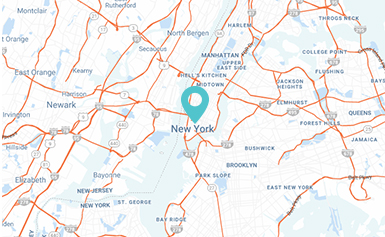Exploring the Mystical Cao Dai Temple: A Journey to Enlightenment
Nestled in the vibrant tapestry of Vietnam’s cultural landscape lies a hidden gem that captivates the imagination and feeds the soul—the Cao Dai Temple. Located just outside Ho Chi Minh City, this awe-inspiring religious complex offers a unique and unforgettable journey into the heart of a fascinating belief system. Join Green Sun Travel on a spiritual and cultural adventure as we explore the mesmerizing Cao Dai Temple.
Overview of Cao Dai Temples in Vietnamese Culture
The Cao Dai Temple, also known as the Holy See Temple or Great Temple of the Cao Dai, is a prominent religious and cultural site located in Tay Ninh Province, Vietnam, approximately 60 miles (97 kilometers) northwest of Ho Chi Minh City. This unique and visually stunning temple complex is the focal point of the Cao Dai religion, a syncretic belief system that incorporates elements from various world religions.
Architectural Marvel: The Cao Dai Temple is renowned for its magnificent and eclectic architectural style. It features a pastel-colored facade adorned with intricate designs, dragons, and decorative motifs. The temple’s exterior is a captivating blend of Eastern and Western architectural influences, symbolizing the harmonious coexistence of different faiths within Cao Dai.
Cao Dai Religion: The temple is the holiest site for followers of the Cao Dai religion, which was founded in the early 20th century in Vietnam. Cao Dai is a syncretic faith that draws inspiration from Buddhism, Confucianism, Taoism, Christianity, and other religious traditions. It believes in one supreme deity who has revealed himself through various historical and religious figures, including Buddha, Confucius, Jesus Christ, and others.
Symbolic Colors: The Cao Dai religion is associated with specific symbolic colors. The temple interior is dominated by the colors yellow, blue, and red, each representing a different branch of the religion. Worshippers dress in robes of these colors during ceremonies, symbolizing their allegiance to a particular denomination within Cao Dai.
Daily Rituals: The Cao Dai Temple hosts daily prayer ceremonies that are open to the public. These ceremonies feature elaborate rituals, chanting, music, and incense offerings. They symbolize the connection between the earthly and spiritual realms and serve as a demonstration of the religion’s core beliefs.
Gardens and Museum: In addition to the main temple, the complex includes beautifully landscaped gardens, lotus ponds, and bonsai trees. There is also a Cao Dai Museum on-site, providing visitors with a comprehensive understanding of the religion’s history, tenets, and the life of its founder, Ngo Van Chieu.
Cultural Experience: Visiting the Cao Dai Temple offers travelers a unique cultural and spiritual experience. It provides insights into the rich tapestry of religious beliefs in Vietnam and the peaceful coexistence of different faiths under one roof.
Tourist Destination: The temple is a popular tourist destination and is easily accessible from Ho Chi Minh City, making it a common day-trip option for travelers interested in exploring the cultural and religious diversity of Vietnam.
My trip to Cao Dai Temples

Day 1: Arrival in Tay Ninh
As I arrived in Tay Ninh, a quaint town in southern Vietnam, I was immediately struck by the serene atmosphere that enveloped the region. The Cao Dai Temple, home to the Cao Dai religion, is the primary attraction here, and I couldn’t wait to discover its secrets.
Upon entering the temple grounds, the first thing that caught my eye was the intricate architecture. The temple is a dazzling blend of Eastern and Western influences, with a pastel-colored facade, ornate dragons, and intricate motifs adorning every corner.
Day 2: Morning Prayer Ceremony
On the second day of my journey to the Cao Dai Temple, I had the privilege of attending the morning prayer ceremony, an essential and deeply spiritual experience for Cao Dai followers. As I entered the temple’s main sanctuary, I was immediately struck by the vivid and harmonious display of colors. Worshippers were dressed in traditional robes, each color representing a specific branch or denomination within the Cao Dai religion. This visual representation of diversity and unity is at the very heart of Cao Dai beliefs.
The ceremony commenced with the temple’s priests and priestesses, clad in their respective colored robes, taking their positions at the altar. The atmosphere was charged with an aura of reverence as the worshippers, including locals and tourists like myself, gathered in anticipation.
The hauntingly beautiful chants of the priests and priestesses began, resonating throughout the temple. The sacred hymns were accompanied by the melodious sounds of traditional musical instruments, creating an otherworldly ambiance that transcended the boundaries of time and space. The harmony and synchrony with which they performed their rituals left me utterly entranced.
As I observed the devotion and dedication of the Cao Dai faithful, I couldn’t help but be moved by the depth of their spirituality. The morning prayer ceremony was not just a religious ritual; it was a profound expression of faith, an opportunity to connect with the divine, and a testament to the coexistence of diverse religious influences within the Cao Dai belief system.
Day 3: Understanding Cao Dai Beliefs
Having been enchanted by the morning prayer ceremony, I dedicated the third day of my journey to gaining a deeper understanding of the Cao Dai religion. At its core, Cao Dai follows the belief in a single, universal God known as the “Cao Dai” or “Supreme Being.” What makes this religion truly unique is its assertion that this Supreme Being has revealed himself through an eclectic array of historical and religious figures.
These divine messengers include Buddha, Confucius, Jesus Christ, and even the French author Victor Hugo. The amalgamation of these seemingly disparate figures into one faith is a testament to the syncretic nature of Cao Dai. It’s a faith that transcends the boundaries of traditional religious divisions, seeking to unite humanity under the banner of a universal truth.
To further my understanding, I engaged in conversations with some of the temple’s devout followers. Their stories and experiences were enlightening and inspiring. They shared their personal journeys towards enlightenment, emphasizing the importance of inner peace, moral righteousness, and unity among all people, regardless of their religious backgrounds.
Day 4: Exploring the Temple Grounds

The Cao Dai Temple complex is not limited to its magnificent main sanctuary. The sprawling grounds of the temple also include beautifully landscaped gardens that exude tranquility and serenity. Wandering through these lush gardens was a serene experience in itself.
The gardens featured picturesque lotus ponds, where the delicate and serene lotus flowers were in full bloom. Bonsai trees adorned the pathways, their intricate shapes and gnarled branches showcasing the patience and artistry of the gardeners who tended to them. The meticulously manicured lawns provided a peaceful spot for contemplation and relaxation.
One of the highlights of my visit was the Cao Dai Museum, located within the temple complex. The museum offered a comprehensive overview of the religion’s history, beliefs, and practices. Through exhibits, artifacts, and informative displays, I gained a deeper insight into the significance of Cao Dai and its role in the spiritual and cultural landscape of Vietnam.
My time spent exploring the temple grounds and museum not only enriched my understanding of Cao Dai but also allowed me to appreciate the profound connection between faith, nature, and culture that defines this remarkable place. It was a day of serenity, reflection, and cultural enrichment.
Day 5: Farewell and Reflection
As my journey to the Cao Dai Temple came to an end, I felt a profound sense of gratitude for the experience. The temple’s peaceful ambiance, its stunning architecture, and the rich tapestry of beliefs that converge here left an indelible mark on my soul.
Conclusion
Visiting the Cao Dai Temple was more than just a travel experience; it was a spiritual journey that opened my eyes to the beauty of diversity and the power of unity in faith. It’s a place where East meets West, where religions converge, and where the quest for enlightenment is celebrated in all its forms. If you ever find yourself in Vietnam, I highly recommend embarking on this extraordinary journey to the Cao Dai Temple. It’s an adventure that promises both cultural enrichment and spiritual growth, making it an unforgettable travel destination.







